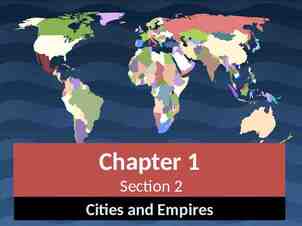Enterprise Resource Planning Systems (SAP) SAP Applications
29 Slides736.50 KB

Enterprise Resource Planning Systems (SAP) SAP Applications

Introduction to ERP What is an Enterprise Resource Planning System What is ERP? Evolution of ERP ERP Characteristics Major Reasons for Adopting ERP

Introduction to ERP Introduction to SAP Brief History of SAP SAP R/3 System’s Architecture The R/3 System’s Modules The hidden costs of introduction

What is ERP? An Enterprise Resource Planning (ERP) System is a fully integrated Business Management System covering the functional areas of an enterprise, such as Accounting, Finance, Human Resources, Logistics, Production etc. (Anderson, 2011).

What is ERP? The word Integration is the key element for ERP implementation. An ERP system is an attempt to integrate all functions across a company to a single computer system that can serve all specific needs of users:

What is ERP? It organizes and integrates operation processes and information flows etc. to make the optimum use of resources such as people, material, money, machine etc. It may also integrate key customers and suppliers as part of the enterprise’s operation. It provides integrated database and custom-designed report systems. It adopts a set of “best practices” for carrying out all business processes.

What is ERP? Enterprise Resource Planning systems ensure: a database, an application, and a user interface for the entire enterprise, where the system rules manufacturing, distribution, finance, sales etc.

Evolution of ERP In the growing business environment, the following factors motivate industry to develop ERPs (Hetyei, 2009): aggressive cost-cutting initiatives, the need to analyze costs/revenues on a product or customer basis, flexibility to respond to the changing business requirements, the demand of the management for more information needed for decision making, looking for new solutions in the business world.

Evolution of ERP Information systems have traditionally been placed in two broad categories: Operations Support Systems (1950s-): OSSs process data which are generated during business activities in order to provide internal users (business owners and employees) and external users (buyers and distributors) with a big amount of information. Furthermore, OSSs support day-to-day operations and the lower level management functions.

Evolution of ERP Information systems have traditionally been placed in two broad categories: Management Support Systems (1960s-): MSSs are designed to provide accurate, timely and relevant information needed by managers for effective decision making. Thus, MMSs support the decision-making needs of strategic (top), tactical (middle) and operating (supervisory) management.

Operations Support Systems (1950s-): Transaction Processing Systems (TPS): record and process data which derive during the daily course of business. TPSs serve as the database of higher systems during the supervision of everyday business activities (settling invoices, paying salaries and placing orders).

Operations Support Systems (1950s-): Process Control Systems (PCS): control, monitor and capture ongoing physical processes, and make routine decisions, real time adjustment to a process.

Operations Support Systems (1950s-): Enterprise Collaboration Systems (ECS): support team and enterprise collaboration and communication. Collect, process, store, and transmit data and information in the form of electronic office communication.

Management Support Systems (1960s-): Management Information Systems (MIS, 1960s-): provide information for the managerial end-users to support their day-to-day decision making needs. Decision Support Systems (DSS, 1970s-): are interactive, computerbased information systems that use decision and specialized databases to assist (un)structured decision-making processes.

Management Support Systems (1960s-): Executive Information Systems (EIS, 1980-): provide strategic information to support to needs of top management. These systems are easy to operate and understand and provide immediate access to selective information about key factors.

Management Support Systems (1960s-): Material Resource Planning Systems (MRP): carry out the prerequisite materials and disposable inventories for timing vendor and production provisions. Manufacturing Requirement Planning Systems (MRP II., 1980s-): unite the production with the supply and demand processes to claim and support ad-hoc and seasonal reports by using networks.

Management Support Systems (1960s-): Expert Systems (ES): are artificial intelligence and computer based systems that emulates the decision-making ability of a human expert (Jackson, 1998). Enterprise Resource Planning Systems (ERP, 1990s-): integrate the resources of hardware, software, people, network, and data to perform input, processing, output, storage, and control activities that convert data resources into information products.

Management Support Systems (1960s-): Business Suits (BS, 2000-): are integrated applications that enable enterprises to perform essential, industry-specific, and business-support processes with modular solutions.

The evolution of ERP Systems Years Information Systems 1950s TPS 1960s MIS 1970s DSS, MRP 1980s EIS, ES 1990s ERP 2000s Business Suits

ERP Characteristics Any system has to keep few key characteristics to qualify for a true ERP solution. These features are the following (Mazzulo –Wheatley, 2006): Flexibility: an ERP system has got to be flexible to respond to the changing needs of an enterprise. Modularity and Openness: an ERP system has got to have open system architecture. This means that any module can be interfaced or detached whenever required without affecting the other modules.

ERP Characteristics User-Friendly Services: the menus and services of an ERP programs has got to be standard and comprehensible. Wide-ranging: ERP systems have got to be able to support a variety of organizational functions and must be suitable for a wide range of business organizations. Beyond the Company: it must not be confined to the organizational boundaries, rather it is supposed to support the on-line connectivity to the other business entities of the organization. Best Business Practices: ERPs must have a collection of the best business processes applicable worldwide. An international ERP package imposes its own logic on a company’s strategy, culture and institute.

Major Reasons for Adopting ERP In the following we list some of the major features of ERP Systems supporting business activities (Stair– Reynolds, 2010): ERP provides a multi-platform, -facility, mode and multi-currency, with multilingual facilities. It supports strategic and business planning activities, operational planning and execution activities, creation of Materials and Resources.

Major Reasons for Adopting ERP ERP covers all functional areas like manufacturing, selling and distribution, payables, receivables, inventory, accounts, human resources, purchases, etc. ERP performs core activities and increases customer service, thereby augmenting the corporate image. ERP bridges the information gap between organizations and provides complete integration of systems, not only across departments but also across companies under the same management.

Major Reasons for Adopting ERP ERP allows the automatic introduction of the latest technologies like Electronic Fund Transfer (EFT), Electronic Data Interchange (EDI), Internet, Intranet, Video conferencing, ECommerce, etc. ERP eliminates most business problems like material shortages, productivity enhancements, customer service, cash management, inventory and quality problems, prompt delivery, etc. ERP provides intelligent business tools like decision support system, executive information system, data mining and easy working systems to enable better decisions.

Why companies worth to undertake ERP Systems? Integrate financial information: ERP creates a single version of the information that cannot be questioned because everyone uses the same system. ERP systems integrate customer order information: ERP systems can become the place where the customer order lives from the time a customer service representative receives it until the loading dock ships the merchandise and finance sends an invoice.

Why companies worth to undertake ERP Systems? It standardizes and speeds up manufacturing processes: ERP systems come with standard methods for automating some of the steps of manufacturing processes. It reduces inventory: ERP helps the manufacturing process flow more smoothly, and it improves visibility of the order fulfillment process at the company. It standardizes HR information: especially at companies with multiple business units. HR may not have a unified, simple method for tracking employees' time and communicating with them about the benefits and other services.

Potential benefits of using ERP systems: Internal Benefits Integration of a single source of data Common data definition A real-time system Increased productivity Reduced operating costs Improved internal communication Foundation for future improvement

Potential benefits of using ERP systems: External Benefits Improved customer service and order fulfillment Improved communication with suppliers and customers Enhanced competitive position Increased sales and profits

The End






